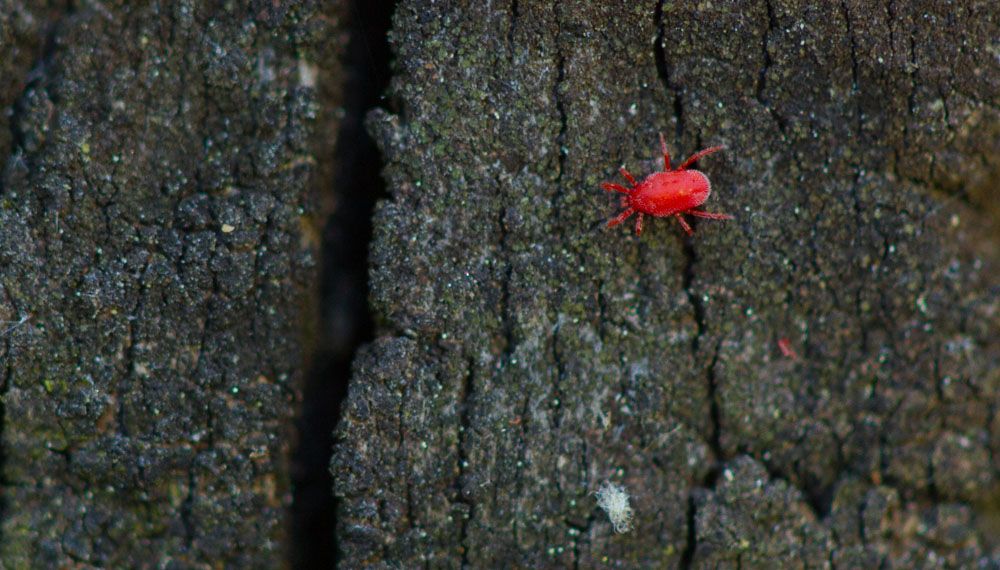
Clover Mite – Bryobia praetiosa
Clover Mite: Appearance, Territory, Damage, and Life Cycle
Latin Name: Bryobia Praetiosa
Appearance: One of the biggest plant-feeding mites seen in the landscape is the clover mite. It frequently becomes a problem indoors after heavy rain, extreme heat, or a change in season. Despite its name, finding a clover mite is not a happy find. This dark reddish-brown bug, barely bigger than a pinhead, poses no harm to human health or does significant damage to dwellings, but it may be a huge annoyance when it invades structures.
An adult clover mite is one of the most common forms of plant mites. These oval-shaped mites have 8 legs and are approximately.75 mm long. They are often greenish or reddish in hue. These organisms feature feather-like plates (or scales) on their abdomen and a massively extended first set of legs, which are occasionally mistaken for antennae.
Hosts Plants: Legumes, lawn weeds, lawn grasses, certain decorative plants and shrubs, and trees.
Territory: Clover mites are found all over the world, including North and South America, Europe, Asia, Africa, and Australia.
Damage Insect Cause: Clover mites, fortunately, cause relatively little physical damage. They can stain if you smash them on light-colored surfaces (which is not their fault) or stipple on plants that they feed on. Because clover mites feed on lawn grass and ornamentals, huge numbers may be a major nuisance, discoloring plants and flowers.
However, as long as you take proper care of your plants, the clover mite feeding harm will be purely aesthetic. They do not transmit plant viruses or other illnesses, as certain sap-sucking organisms do. Small clover mite populations simply cannot outnumber healthy plant tissues.
Life History and Habits: Unlike other species, female clover mites do not require a man to procreate. Parthenogenesis is the method through which these mites reproduce. This is excellent news for clover mites, but not such good news for those attempting to get them out of their houses. We humans would prefer not to have our homes invaded by small red bugs that stain surfaces when we try to exterminate them. Furthermore, a single female clover mite can produce up to 70 eggs at a time! These babies reach maturity in 30 days or fewer, after which the females may procreate. This can result in a large number of clover mites in a short period of time.
Symptoms and Prevention: Clover mites seldom cause significant damage to plants, although, in large numbers, they can give a “silvered” look owing to chlorophyll loss. They become a nuisance when they infiltrate homes or other structures. Homeowners may take precautions to avoid clover mite infestations indoors. To begin, remove heavy foliage or plants known to attract clover mites in an 18 to 24-inch strip around the perimeter of the property. Similarly, homeowners should examine the building for cracks that might serve as access sites, including the foundation, window frames, and siding. Clover mites cannot lay eggs or enter the residence if these gaps are not securely sealed.
